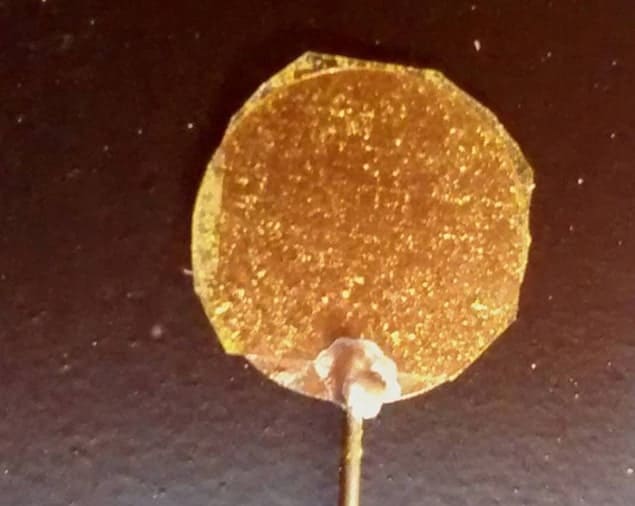
A new type of electrode that could lead to the development of more efficient and lighter supercapacitors has been unveiled by researchers in India. The electrode has a new hybrid structure that is made from iron and nickel nanowires, and could be used to boost the capacitance, current density and charging/discharging rates of big capacitors used to store large amounts of electrical energy. The electrodes are inexpensive and environmentally friendly to produce, say the researchers, and could someday be used to make supercapacitors to power a range of devices, from mobile phones to electric cars.
Supercapacitors store energy by separating positive and negative charge through electrochemical reactions that involve the exchange of electrons and ions at the interfaces between two electrodes and an electrolyte. These devices combine the large-scale energy-storage properties of batteries with the rapid charging times and long lifespans of conventional capacitors. In principle, supercapacitors could be used to create electric cars that could be fully charged in minutes, and mobile phones that would charge in seconds. Today, however, a supercapacitor is much larger and heavier than a conventional battery that holds the same amount of energy.
Porous shell
Created by Ashutosh Singh and colleagues at the S N Bose National Centre for Basic Sciences in Kolkata, the new electrode has a two-part nanostructure comprising a conductive iron–nickel core and a hybrid iron-oxide–nickel-oxide outer shell. The electrodes are made in two stages. First, arrays of iron–nickel nanowires are created through electro-deposition into a porous, anodized alumina-oxide template. After the template is dissolved away, the second step of the process sees the wires temporarily exposed to oxygen at a temperature of 450°. This forms a porous iron-oxide–nickel-oxide hybrid shell around the iron–nickel core.
“The advantage of this core/shell hybrid nanostructure is that the highly porous shell nanolayer provides a very large surface area for redox reactions and reduces the distance for the ion-diffusion process,” explains Singh. Complementing the outer shell, the iron–nickel core provides a highly conductive pathway by which electrons may be transported to the current collector.
In addition, the way that the new electrode is structured means that no binding material is required to attach the redox active materials to the current collector – which is unlike conventional carbon or graphene electrodes. This, say the researchers, will help to lower the overall weight of the supercapacitor design.
Promising results
The researchers say that initial tests of their electrode design have been promising. In comparison with equivalent non-hybrid iron/iron-oxide or nickel/nickel-oxide electrodes, the new design achieved a higher capacitance of about 1415 F/g. The charging/discharging rate is about 2.5 A/g, and the current density is significantly higher than both nickel and iron-based non-hybrid electrodes. The electrode was also able to maintain up to 95% of its initial capacitance after 3000 charging–discharging cycles.
Cary Pint of Vanderbilt University in the US calls the new electrode design “innovative”, and highlights its potential relevance to other areas, such as catalysis and sensing applications. “The design of materials with complex hybrid functionality, as is demonstrated in this work, is a key pillar for innovation in next-generation high-power chemical-storage systems,” he adds.
With the initial tests of their demonstration electrode complete, the researchers are now moving to develop a functioning supercapacitor based around the hybrid-electrode design. Then they will test the functional performance and temperature stability of the device. A complete supercapacitor is expected to be developed in about 8–10 months, Singh told physicsworld.com. The researchers say that they will also be exploring avenues of commercial production.
The electrode is described in the Journal of Applied Physics.



